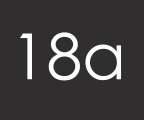


One of the great thing about Wordpress, is that it comes with 6 different user roles, allowing you to manage what other members of your team are allowed to do on your website.
The first role is the 'Super Admin', although, if you have upgraded to WordPress 3.1 or above this role is referred to as 'Network Admin'. This is the person who has access to the entire network through the blog network administration features. Within this role they can also 'create a network'. This is a new feature as of WordPress 3 and is where you can create a network of blogs within the WordPress installation. If you're using Wordpress as simply your company website, you probably won't need to worry about Super Admins/Network Admins.
The Super Admin, or Network Admin has the ability to carry out all the different roles, whilst the other five roles are limited to what they can and can't do.
The second role is the 'Administrator' – simply put they have access to the administration features of WordPress. They can write, edit, and delete posts, as well as adding new users. When installing WordPress, an account for Administrator is automatically created and they have the ability to control all capabilities of WordPress.
The third role is the 'Editor'. Editors can publish and manage posts and pages and look after other user's posts.
The next three roles are 'Author', 'Contributor' and 'Subscriber'. The Author has the ability to publish and manage their own posts, while the Contributor can manage their posts but they are not able to publish them. The Subscriber only has the ability to manage their own profile.